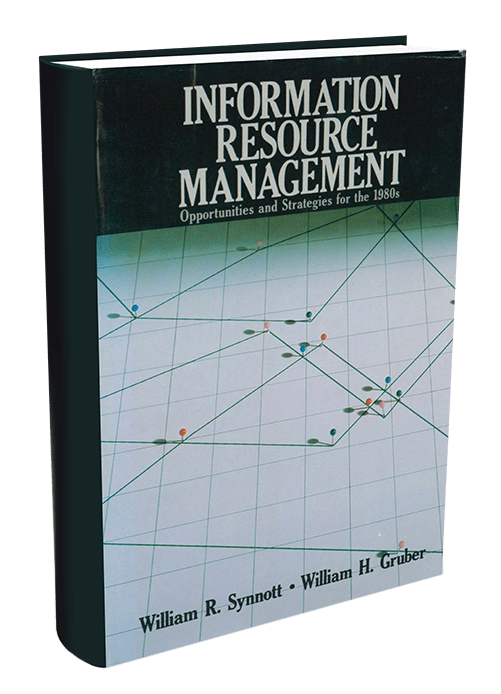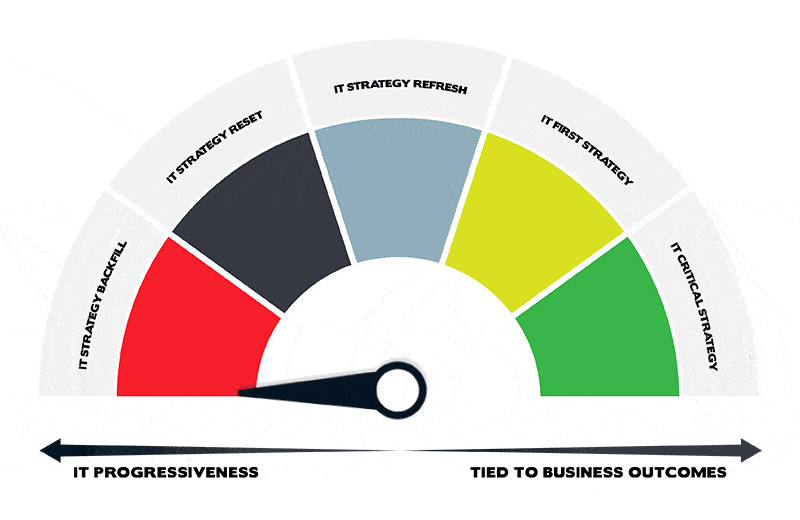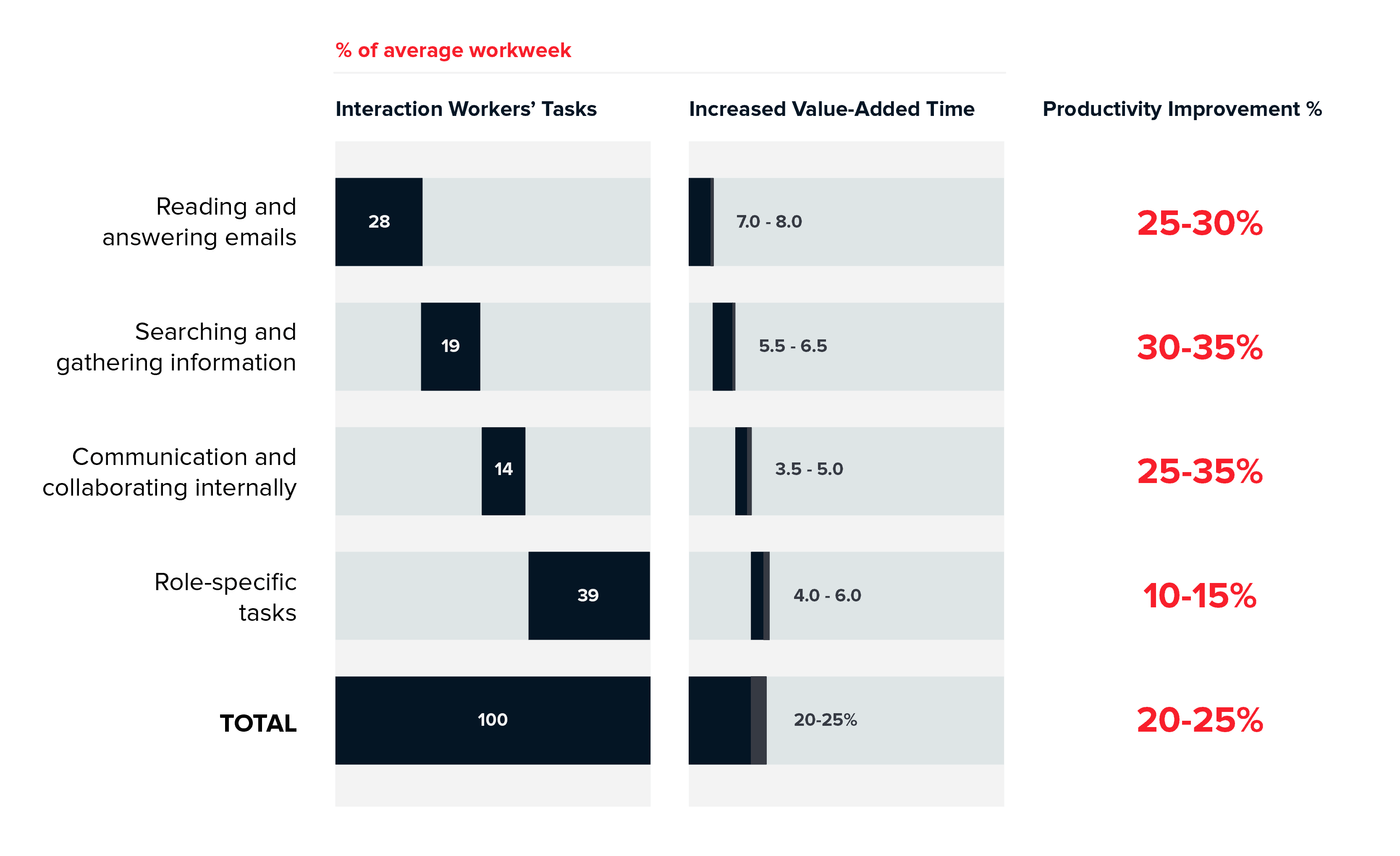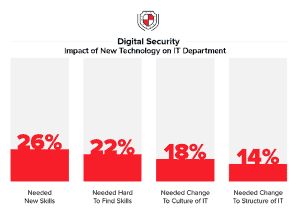


The CIO: 1981 – 2018
The role of the CIO was first defined in 1981 by William R. Synnott, former Senior Vice President of the Bank of Boston; and William H. Gruber, former professor at the MIT Sloan School of Management. The Chief Information Officer (CIO) role described a senior executive who strategically managed information in a time when data processing was still in its infancy and data was foreseen as a powerful business tool.

A Reactionary Support Role
The CIO in the past was largely seen as a reactionary “order-taking” department with a mandate to support the needs of other business units.
Working to resolve problems like…
- How to adopt new technologies
- How to maintain existing technologies
- How to drive down cost
- How NOT to fall behind the latest innovation of competitors
… only AFTER the business unit had decided on strategy and direction.
Fast forward thirty-seven years to 2018 where the role of the CIO has changed dramatically. A trend that will continue with technology moulding the role of the CIO from fulfilling operational needs to orchestrating growth.
CIO 2.0
The Growth Orchestrator
As the role of the CIO has expanded from the IT silo to cover essentially all strategic aspects of an organization, CEOs are looking to the CIO for guidance on growth and differentiation. CEOs seek to drive business growth with true digital transformation and develop a corporate strategy to transform the business through technological transformation.
With new expectations come new challenges.
Challenge #1
Aligning IT Strategy with Reality
IT scalability and agility go hand-in-hand to meet the needs of IT progressive companies.
Roughly 84% of businesses fail in various stages of digital transformation.
But an overly aggressive move to adopt technology may spell disaster for an organization not quite ready to fully embrace the Cloud or digitize business operations. The challenge of the CIO is to understand the needs of the stakeholders and to make the smart decisions to drive business growth.
IT Critical organizations recognize that an IT strategy is integral to ensure the success of critical business goals; while organizations in the Strategy Backfill struggle to barely meet the current demands.
Understanding where the organization falls within the spectrum and aligning the IT strategy with that stage will help the CIO to make an effective change towards transformation. CEOs who seek to make unrealistic demands for transformation will continue to keep CIOs up at night and effectively meet push-back and failures across enterprise-wide strategy.
In 2017, 43% of CEOs stated they face pressure from their BoD to make progress digital transformation.
When it comes to IT strategy, organizations fall within a spectrum of five technology archetypes:

Source: 360° Cloud Readiness Framework, Cloud Spectator
Challenge #2
Moving IT From Functional to Transformational
Digital transformation may sound like it’s born overnight, but most organizations take an incremental adoption model before reaching a true digital transformation.

During the transition, most organizations will choose to adopt a hybrid solution — balancing innovation with business readiness.
Finding the balance of moving IT from functional to transformational will continue to be a challenge for CIOs. Some CIOs will struggle to move their teams away from just the functional duties, and finding the right resources and budgeting for these changes will keep the CIO up at night.
CIO Functional Duties to Transformational Role at a Glance:
Functional Duties | Transformational Role | |
Focused on IT-outcomes |
| Focused on business-outcomes |
Fulfilling ticket requests |
| Collaborating for strategy |
Supporting business units |
| Driving corporate agenda |
Cost cutting and controlling |
| Revenue and market share growth |
Process improvement |
| Analysis and data mining |
Industry parity |
| Competitive advantage and differentiation |
IT risk abatement |
| Business-wide risk abatement |
Challenge #3
Improving Efficiency of Your Most Valuable Asset
A CEO and a CIO Walked into a Bar…
The two ask the bartender to mix them the most expensive cocktail that money can buy. When the CEO and CIO ask for the bill, the bartender asks each of them for payment in the form of the company’s most valuable asset. The bartender went home with an employee and a server — ba-dum-ching!
The joke was written with a 2010 audience in mind, but CIOs still lament to get the respect of their colleagues when it comes to business priorities. Employees are indeed a company’s most valuable asset, and gaining insights into employee behavior and seeking technology to improve efficiency are a growing priority for CIOs.
Employee productivity has been on a steady rise in the US, with employee productivity increasing 1.2% in 2017. Technology plays a large role in making these improvements for industries across the board.
Improved communication and collaboration through social technologies could raise the productivity of interaction workers by 20 to 25 percent.

Source: International Data Corporation (IDC); McKinsey Global Institute Analysis
With IT sprawl the struggle to manage end-point users is growing, but opportunities to improve scalability and efficiency are abundant. Technology to cull user data, integrate applications, and automate business processes have a real and measurable impact on the workforce.
The role of the CIO is to orchestrate integrations to create smoother user experiences, and to offer efficiency for its employees (not just the servers).
Challenge #4
Mitigating Business Risk From Cyberattacks
According to the Gartner 2018 CIO Agenda Report, 95% of CIOs surveyed expect cybersecurity threats to increase and adversely impact their organization.
Most organizations use technology to combat cyberattacks and allocate a budget for cybersecurity, but cybersecurity is cited as the second most challenging technology to implement, after artificial intelligence.

Gartner 2018 CIO Report, Size: 2,242
CIOs must move quickly to secure experts or train bright talent in the field of cybersecurity, as it is expected that there will be more than 1.5 million unfilled cybersecurity positions by 2020.
With cybercrime becoming increasingly sophisticated and common (cybercrime is now a $445 billion business), the expertise and expense of maintaining and adapting to the changing landscape will continue to be a concern for CIOs. Increasing budgets to adequately combat cyberattacks will likely eat up much of an organization’s increased IT budget.
As digital transformation pushes business differentiation under IT, protecting the organization’s assets and livelihood will fall square in the lap of the CIO.
Challenge #5
Driving Business Growth Through Digital Innovation
It wasn’t too long ago that the CIO was fighting for a voice in the boardroom, but as organizations strive for digital transformation, the balance of power is quickly shifting.
The CEO is now looking to the CIO to create opportunities for rapid deployment of ideas and to be a trusted partner.
According to Gartner’s 2018 CIO Agenda Report, the No. 1 priority of CIOs in 2018 is business growth/market share.
CEOs will be looking to the CIO for business insights, innovation, and differentiation to grow the bottom line. Merely making decisions on platforms and technologies to fulfill business requirements will only delay transformation and impede growth.
IT as a growth driver is not limited to tech companies. There are greater opportunities for differentiation in more traditional industries, where the CIO can transform an organization or even an entire industry.
These are exciting times for the CIO to lead in areas such as:
- Customer Insights
- Operations Insights
- Scalability
- Systems Integrations
- Differentiation
- Innovation Through Collaboration
Historically, IT has been an expensive capital expenditure that had to be constantly updated and maintained. Servers were clunky and networks were unreliable, causing long queues for support tickets to be answered. IT was seen as a barrier to growth.
It’s no longer like that.
Now, with infinitely scalable hyper-cloud environments and versatile off-premise infrastructure available with the click of a button, the only limitation to innovation is the ideas themselves.
Challenge #6
Improving the Customer Experience Through Business Intelligence
Customer retention rates (CRR) and customer acquisition costs (CAC) are numbers that are scrutinized by organizations in growth mode.

Increasingly, CIOs are being called to the table to provide insights into differentiation strategies and customer acquisition talks, along with Marketing, Sales, Support, and Operations Teams.
With technology at our fingertips, consumers are becoming increasingly impatient, ushering in the age of immediacy.
Think Amazon Prime’s same-day-delivery or the shopping feature on Instagram. Technology empowers shoppers to find, research, and compare products anytime from anywhere but this is also a double-edged sword. In a study by Salesforce on consumer behavior, 70% of consumers noted that technology makes it easier to take their money and business elsewhere. And it doesn’t end there. Brand loyalty has pretty much gone out the window, with half of the consumers in the survey stating they will indeed switch brands if businesses do not anticipate their needs.
This is a crucial time for a CIO to position themselves as adaptable, progressive, and innovative. Providing different business units with business intelligence (BI) for opportunities to improve customer experience and customer acquisition, will place the CIO in a position of trusted advisor.
According to Andy Yost, CMO, Gannett, “2018 will be the year of servicing consumer needs before they even arise. Brands leveraging the right data and analytics to deliver impactful customer experiences will rise to the top.”

The New Face of Customer Service
Old | New | Customer Experience Benefits |
Voice Channels | Digital Channels (email, chat, social, text, messaging, smartphone) | High - More timely and seemless, with better response and better tracking. Ability to share files, images, and links leads to faster triage and resolution |
Siloed CRM | Real-time Analytics | High - Highly personalized and predictive, generating recommendations based on information received and past behavior |
FAQs and Knowledge Base | AI and Machine Learning | High - Make agents highly efficient and provide faster service with more accurate data-driven responses |
Humans Only | Bots-Assisted | Potentially Very High - Bot deployment or bot-assisted deployment frees up human labor for higher-minded, more emotional, and complex decision making. It's not perfect today but we can count on it getting better soon! |
Key areas where IT will be a leader are business intelligence (BI), artificial intelligence (AI), and automation, just to name a few. According to the 2018 CIO Agenda Report, BI/analytics is cited as the No. 1 technology for companies to differentiate themselves from competitors.
Summary
The role of the CIO is changing. Historically, the CIO has served the needs of other business units and their goals. That is changing quickly.
The new CIO is now deeply involved in business strategy with technology being central to business growth objectives. With global IT spending expected to reach $2.7 trillion in 2018, the CIO will play a larger role and manage larger teams to meet the demands of these technologies. The opportunities are limitless for innovation!
So rest assured knowing you’ve got the insights to make your next move. Good night and sleep tight…


